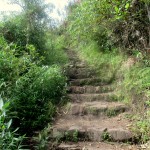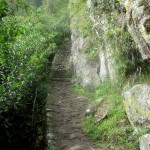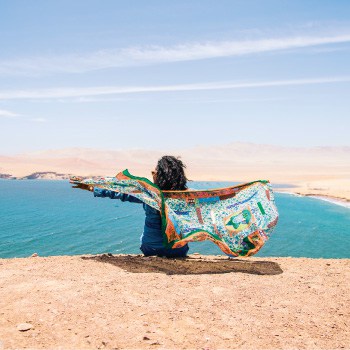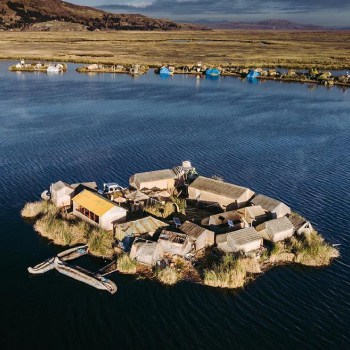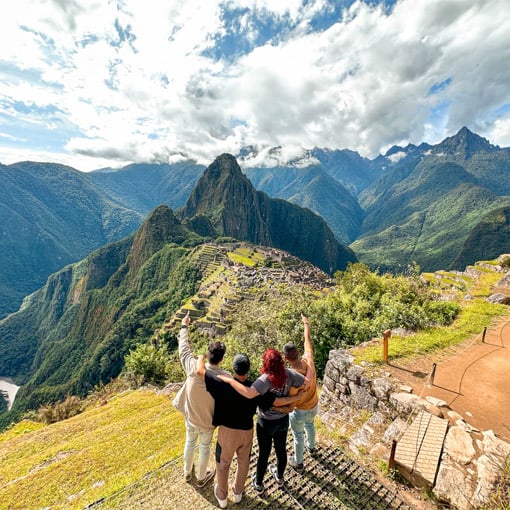Overview
Machu Picchu Mountain is the most spectacular yet one of the most overlooked optional treks available at Machu Picchu. Located to the south-west of Machu Picchu citadel and towering 3,050 meters (10,007 feet) above sea level, the mountain trek offers unparalleled views of the famous Inca sanctuary and panoramic vistas of the surrounding mountain scenery. At its summit Inca priests once performed rituals on special dates as well as liturgical greetings to the Salkantay Apu.
Booking a tour including Machu Picchu Mountain
To trek Machu Picchu Mountain one has to be in Machu Picchu with a distinct combination ticket for both Machu Picchu itself and Machu Picchu Mountain, we will elaborate more in the content below. However should you wish to look for options for tours to Machu Picchu straight away have a look Yapa Explorers. In the last year, they have become one of the most reputable and go-to operators for all Machu Picchu tours and treks. With various top-rated options for all types of travelers and a great team all around, it’s easy to see why!
Finding the Trail Head
From the main entrance of Machu Picchu follow the upper-trail heading in the direction of the Guardhouse. Small and newly erected wooden signs signal the start of the trail head, which is also the same path that leads to the Sun Gate (Inti Punku). A couple of minutes from the Guardhouse, you need to turn right and follow the path which climbs up through the agricultural terracing. Following the trail for another 15 minutes you will arrive at the wardens hut, where you need to sign in showing your passport and entrance ticket. From the entrance of Machu Picchu to the wardens hut takes approximately 30 minutes.
The Trail
Unlike Huayna Picchu or Putucusi Mountain treks, the Machu Picchu Mountain trek is wide and well-marked. After the wardens hut, the trail follows a fairly even ascent of about 30 – 35 degrees in angle for about 1 hour. Gradually and steadily gaining altitude, the views of Machu Picchu and the surrounding mountains become ever-more impressive. There are several views and rest points along the way. As the trail gets closer to the base of Machu Picchu Mountain, the steps become steeper, narrower and more challenging. Winding on for another 30 minutes or so, the trail passes through a stone gateway, before following a narrow mountain ridge to the summit. A small round hut provides shelter and seating, whilst the view point (a few more yards on) offers awe-inspiring views of Machu Picchu, Huayna Picchu and Putucusi Mountains. The decent follows the same route, but takes about 20 – 30 minutes less.
Difficulty
The Machu Picchu Mountain trek is considered to be a moderate to challenging trek. Following an original stone Inca Trail and continuously ascending to the summit, a good level of fitness is required. During the wet season, the trail can become more slippery making it more challenging to traverse. It is not for people with a fear of heights. In places the trail is very steep and often follows the mountain edge with sheer drop offs.
Difficulty: moderate to challenging
Quick Tip
To find the best tours and treks to Machu Picchu, we recommend checking out Yapa Explorers. Currently one of the most reputable operators to Machu Picchu!
- Sigh post to the trail head
- Gentle start to the trek
- Warden’s hut name regisry
- Trail, first 30 minutes after the guard house
- View from half way up
- More challenging part of the trail (last 30 minutes).
- Stone gateway, 20 minutes from the summit
- View from the top
- Hut at the summit
Helpful Info
Time needed: ascent – 1h30 minutes accent, descent – 1 hour, 30 minutes at the summit.
Altitude of summit: 3,082 meters (10,111 feet) above sea level.
Height to climb from Machu Picchu: 652 meters (2,139 feet).
Terrain: Inca Trail stone path steps and in places grass/dirt.
Recommended footwear: Training shoes, light weight walking boots.
Entrance time: 7 – 11am.
Trail head: In the south-west of Machu Picchu citadel.
Machu Picchu Tickets: Limited to 400 per day, tickets need to be purchased as a combination ticket with general entrance to Machu Picchu.
Photos
Best Time to Trek
Machu Picchu Mountain is accessible all year round. During the wet season (November – April) there is a higher chance of heavy rainfall and the trail can become slippery and more challenging to traverse. The region has a sub-tropical feel throughout the year, with average daily temperatures of 18 °C (64 °F). During the dry season the humidity is around 40 – 45%, rising to 60 – 65% during the wet season. Entrance to the trek is permitted anytime from 7 – 11 am daily. Early morning trekking offers cooler temperatures and better shade from the sun.
Be Prepared
The weather in this region of Peru can often be un-predictable any time of the year, so you must be prepared with clothing for rain and sun. The trail is mainly stone steps so comfortable lightweight training or hiking shoes are recommended. A light weight rain coat or poncho and sun protection is advised. If you want to read a bit more about the weather in other regions of Peru, just click here.
Check list:
- 1 to 1.5 litres of water (2 – 3 personal bottles).
- Sun hat, sun glasses & sun block.
- Walking stick with rubber tip (if required).
- Strong insect repellent.
- Light weight rain coat or poncho.
- Small snacks.
- A change of t-shirt for the top.
- Passport.
- Camera.
The Only Peru Guide Expert Tip
Peru Hop buses are the best and safest way to get to and from Cusco, home of Machu Picchu.
Coping with Altitude Sickness
For the bulk of travelers, principally those who acclimatize slowly, the consequence of being at a high altitude will be some shortness of breath and a slight headache. However, should any of these conditions worsen or fail to improve after several hours, it can be an extremely severe even life-threatening issue that must be responded to immediately.
It is important to plan ahead to make sure your health is taken care of every step of your trip.
The suggested approach to acclimatization is to ascend bit by bit passing at least 24 hours at every 2000ft. advance in altitude. It is essential to create time to acclimatize in your itinerary while on your trip to Cusco and on to Machu Picchu. If journeying from Cusco to Lima, we strongly suggest following Peru Hop‘s route down along the coast and up to Cusco from the wonderful city of Arequipa. This route ascends gradually giving you some important acclimatization time to adjust to the thinner air and help prevent any issues when visiting the UNESCO heritage site. Traveling on a bus is ideal as the slower ascent helps as opposed to immediately flying to a high altitude from sea level.
As you reach increased altitudes remember these easy steps:
- Drink plenty of water.
- Don’t drink too much alcohol.
- Eat small meals
- Restrict exercise (initially)
Plan smart and don’t let your dream trip turn into a nightmare by having to fight altitude sickness.



